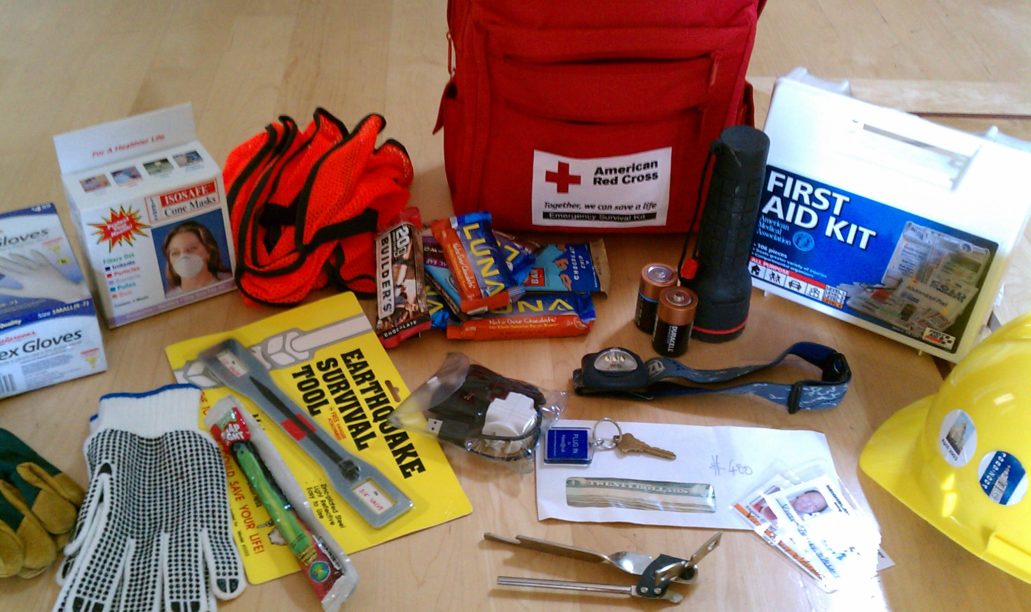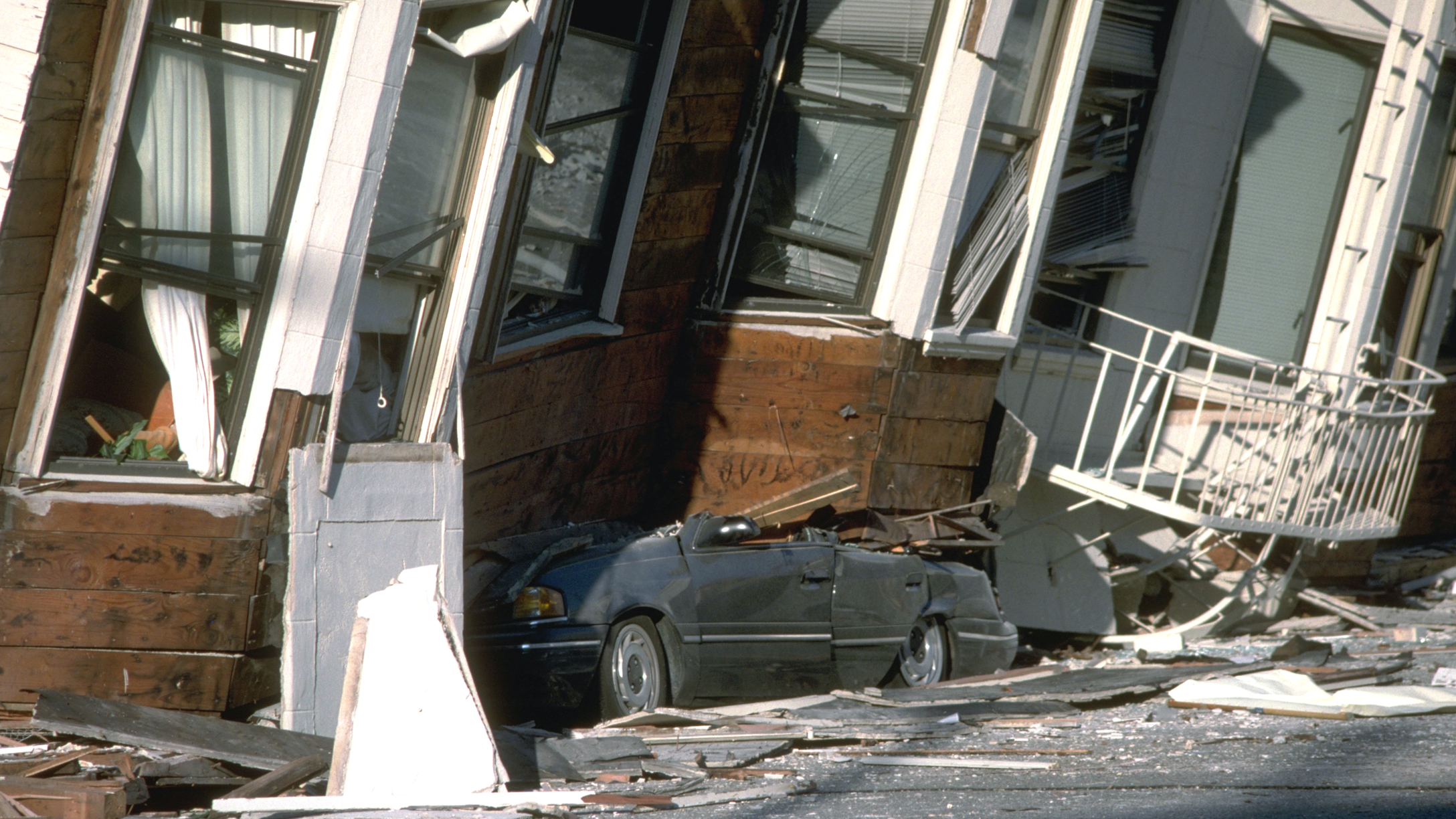A couple of years ago, my upstairs neighbor died of a drug overdose. He was well known in his line of work for something I won’t describe because that would make it obvious who he was. I knew him best for dropping beer bottles on his floor, which is my ceiling, because in our nearly-century-old apartment building nothing is level, and they would loudly roll the length of the wood-plaster floor-ceiling we shared.
The night it happened, my husband Andreas and I came home from dinner to find the neighbor’s girlfriend shrieking on the building’s front steps; I recognized her voice from their endless fighting upstairs, not because we had ever actually met. Firefighters were coming and going, and no one seemed to be paying any attention to the young woman screaming alone on the staircase. Andreas headed for the front door to go in and assess the scene, but I stopped. “I’m going to stay down here,” I said, tipping my head to one side to motion to the girlfriend, who was frantically texting and leaving hysterical voicemails, “He’s DEAD!!”
I managed to help her sit down, and while continuing to wail, she showed me text messages she’d been sending her boyfriend all day. “Are you dead?? Answer your phone!” she’d written. “Look!” she commanded me, and obediently, I looked at her unanswered texts. Neighbor-friends who were home that night told me later that she had run through the hallways screaming for help, and that it was clear he hadn’t been dead long when she discovered his body.
I don’t know how long I sat with her. Eventually, one of her friends arrived and I stood up and backed away, the friend giving me a small nod before taking my place on the stoop.
In San Francisco, the Department of Public Health sponsors a course on psychological first aid that is offered several times a year. The four-hour evening class is free, but only people who are certified San Francisco Fire Department Neighborhood Emergency Response Team (NERT) members can enroll. Becoming a certified NERT is a way to become part of the civilian corps on-call after a major Bay Area disaster, which is probably going to be an earthquake but could theoretically involve terrorism or something else unnatural. We will only be called once professional first-responders are all activated, and after we complete our training, we get green vests with reflective striping, gloves, and a hard hat. If we do it right, we also get our own personal peace of mind.
NERT certification requires a total of 24 hours of classroom and hands-on training, which includes triaging a room full of fake-injured and fake-dead actors, and somewhat more straightforward tasks such as shutting off gas valves located below heavy sidewalk panels to keep explosions to a minimum. (You may need a tool to lift those panels, and maybe one to turn the gas lever 90 degrees. I’m told a local hardware store chain will give you 10% off any of these tools if you show your NERT ID badge.)
Every two years, you have to return for the final eight hours of NERT instruction to make sure you still know how to operate a fire extinguisher and cooperatively build cribbing out of random debris in case you and your fellow volunteers ever need to use a lever to free a trapped person. Staying certified means you’ll be on call if roughly 80% of the city has disintegrated into chaos, and it gives you access to classes like the psychological first aid (PFA).
But if it is preparation for a future one respectfully fears, PFA class is also a four-hour exercise in better living now.
“Imagine the worst, most upsetting things you might see, hear, experience after an earthquake,” said Dr. Elizabeth McMahon, the petite, brunette teacher. She is a clinical psychologist who specializes in fear and stress, and she was here during the 1989 Loma Prieta quake and on call on September 11th. Dr. McMahon regularly flashed a mischievous grin that is simultaneously encouraging and soothing. She paced energetically in front of the classroom while teaching a curriculum she co-developed with Susan Schmitz, a preparedness expert who has a master’s degree in international disaster psychology.
We are meant to understand that we are a resilient species, she said. Resiliency increases the more you prepare, and that deceases stress hormones, which we need to minimize because they don’t help healing. And this prepared resiliency, she crowed, is a virtuous cycle!
“Think ahead to prepare to cope!”
Some people imagine witnessing folks trapped in burning buildings and are terrified of their own helplessness and also the smell; Dr. McMahon hears this a lot, she said, adding that in a fire, most people die of smoke inhalation and do not literally burn to death. Facts like these are meant to help us feel capable and rational. She also recommended we buy jars of Vicks to smear under our noses.
I wrote this down—I’m easily nauseated, often sick on city buses if I accidentally read street signs—and thought about seeing dying animals, something I find especially distressing, and then I tried to picture a whole city full of screaming front porch girlfriends, because for me, that’s a bit more manageable.
A neighbor who was walking up California Street in ’89 told me the road liquefied into what looked like a rogue wave she was suddenly trying to surf, and that mental image seems rather pleasant considering what else might happen soon after such a scene. I hate to camp, but I do now own a lot of camping supplies in case my building collapses and I end up living outside for a while.
“What is hardwired is resistant to stress,” Dr. McMahon said. “To be mentally prepared is your most important skill.” She gave us a ten-minute break.

During grad school, I worked at a low-cost women’s group residence slash hostel. (More than a decade later I looked it up to find that the hostel is now a boutique hotel.) It was an interesting job made challenging by the fact that many of my coworkers were also residents; working the front desk offset their rent burden, but many of their interpersonal troubles spilled into our professional dealings.
One night, someone found a resident I’ll call Cynthia, a middle-aged black woman, collapsed in the shower. Cynthia was one of the few residents that, no matter what difficulties stemmed from living in close quarters and sharing a bathroom with a dozen other people, everyone agreed was a generous, shining light. By the time two of us on duty made it to Cynthia, she was dead. I compressed her chest anyway, untrained but not unwilling, in a blind impulse to help. My boss had to tell me to stop. Someone else called Cynthia’s mother, who I often saw when she visited on Sundays after they’d attend church together.
I’d seen dead bodies in a pre-funeral state before, mostly my parents’ and grandparents’ friends, but also by then my revered paternal grandpa and my sweet same-age stepbrother, who died when we were 18. It was common in my high school for classmates to die in car crashes, and while I’m not sure how to quantify this sort of thing, I think I went to a few too many funerals as a teenager, and am hard to rattle in these situations.
The omnipresent specter of death doesn’t scare me, but the prospect of losing my beloved chosen family is perhaps the thing that frightens me most in the world. It no doubt stems from being an only child who survived my parents’ bitter divorce, and from being estranged from my biological family for basically a third of my life, and lots of other “normal” but substantial enough emotional and traumatic debt that piles up.
As an otherwise relatively well-adjusted adult, this specific fear caused me to seek out cognitive behavioral therapy (much like Dr. McMahon’s counsel) to practice rationally recognizing that most of the people I love most do not engage in anything resembling high-risk behaviors. The chances of them dying are quite low. The facts are meant to help me feel capable and rational. So while I still worry pretty much daily that my cyclist-pedestrian spouse will be hit and killed by a texting Uber driver, I also feel prepared to encounter the worst. Maybe it’s because I can so easily imagine my life falling apart that I am training to be ever more ready to act in calm, compassionate, competent ways toward others.
Outside the fire station classroom in the twilight, I strategically sat on a bench beneath a blooming jasmine bush and breathed in its fragrance until the break was over. Once back in our seats, Dr. McMahon told us that when the time comes to help others, we should use “a late-night radio DJ voice.” I used to be one of those, so I nodded emphatically while everyone else laughed.
She told us to “See the need, say the need.” So for example, “I see you are bleeding,” and perhaps the bleeding person also then says, “Yes, it won’t stop,” or, “What? I can’t feel my legs.” Regardless, you initiate a dialogue.
“Are you willing…?” is apparently the best way to begin a question to then get someone to agree to do whatever you want. We practiced asking these types of questions in class, and when I got home, I showed Andreas what I’d learned by grabbing his hand and stating, “My name is Brittany. I’m a volunteer, and I’m here to help you. Are you willing to accept my help?” He just stared at me.
“Get a ‘yes,’” Dr. McMahon said; PFA training doubles as a class on consent. She also advised us to ask important questions twice. So I asked Andreas a second time—this is an important question—if he was willing to accept my help.
“Say ‘yes,’” I explained. He nodded enthusiastically.
“You have to say words if I’m going to help you.”
This isn’t actually always true in emergency medicine. Mostly you make sure someone is breathing, that their airway is unobstructed. Plus, there are language and cultural barriers that are part of other training modules. In this class, Dr. McMahon advised that we can OAR—“observe, ask, respect”—as a way to find common ground.
We also need to remember realistic, supportive self-talk to keep ourselves from pushing too hard and burning out, or simply to avoid feeling too unhinged, even if everything around us is crumbling. “I am doing the best I can for as many people as possible.” Or, “It is normal and reasonable to take a break and check on my loved ones right now.”
When speaking to people we are trying to help, Dr. McMahon told us to “Say things that are true and positive.” That could be something like, “Someone will be here to help you as soon as they can.” Don’t tell people it will be okay. It probably won’t, and anyway, no one ever wants to hear that bullshit. Say something real. Words have meaning. Something—maybe several somethings—will eventually go wrong. Sea level is rising, and hurricanes and tsunamis and floods will follow. Wildfires are wilder than ever. Wild boars are marauding across most nations, causing billions in destruction and loss. I do my best to imagine the things that would scare me most to encounter. I am thinking ahead to prepare to cope.






